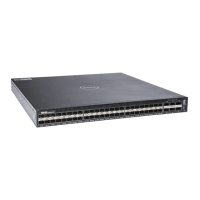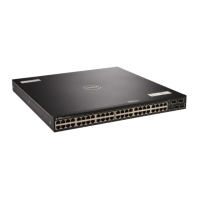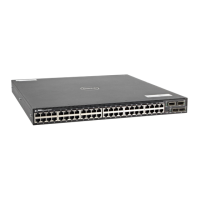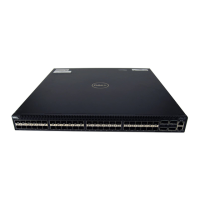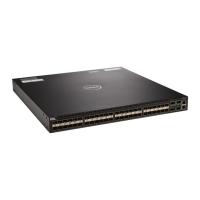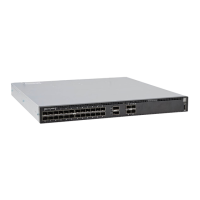Auto-Negotiation on Ethernet
Interfaces
By default, auto-negotiation of speed and full duplex mode is enabled on 100/1000 Base-T Ethernet
interfaces. Only 10GE interfaces do not support auto-negotiation.
When using 10GE interfaces, verify that the settings on the connecting devices are set to no auto-negotiation.
The local interface and the directly connected remote interface must have the same setting, and auto-
negotiation is the easiest way to accomplish that, as long as the remote interface is capable of auto-
negotiation.
NOTE: As a best practice, Dell Networking recommends keeping auto-negotiation enabled. Only disable
auto-negotiation on switch ports that attach to devices not capable of supporting negotiation or where
connectivity issues arise from interoperability issues.
Setting the Speed and Duplex Mode of Ethernet
Interfaces
To discover whether the remote and local interface requires manual speed synchronization, and to manually
synchronize them if necessary, use the following command sequence.
1 Determine the local interface status. Refer to the following example.
EXEC Privilege mode
show interfaces [interface | stack—unit stack-unit-number] status
2 Determine the remote interface status.
EXEC mode or EXEC Privilege mode
[Use the command on the remote system that is equivalent to the first command.]
3 Access CONFIGURATION mode.
EXEC Privilege mode
config
4 Access the port.
CONFIGURATION mode
interface interface-type
5 Set the local port speed.
INTERFACE mode
speed {10 | 100 | 10000 | auto}
NOTE: If you use an active optical cable (AOC), you can convert the QSFP+ port to a 10 Gigabit SFP
+ port or 1 Gigabit SFP port. You can use the speed command to enable the required speed.
Interfaces 488
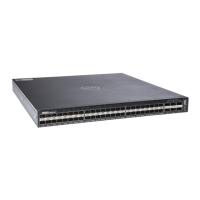
